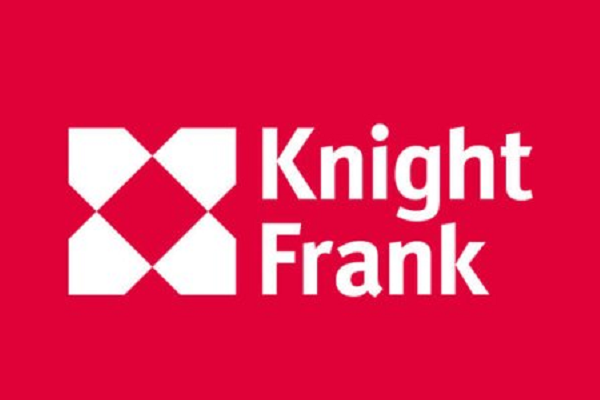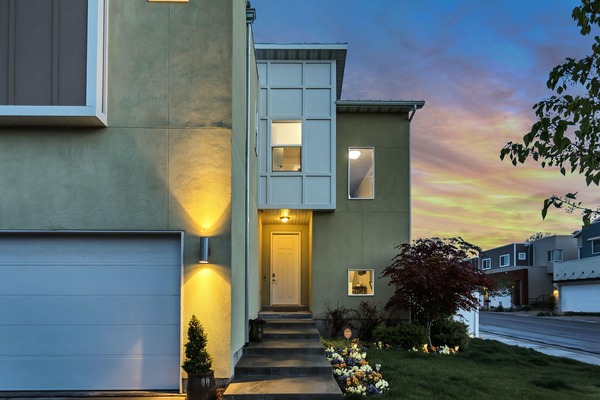News
Property Sales Drop by Over a Half as Stamp Duty Returns
Between September and October this year, housing transactions fell by a whopping 52%, according to HMRC. With the stamp duty holiday saving buyers in total over £6.4 billion, it’s not surprising that property purchases have fallen so dramatically. At the same time, the average home price has risen by £28,000, making it more difficult for many to get a foot on the property ladder.
Last month, the UK saw 77,000 property transactions, indicating a 52% fall from the previous month and a 28% drop from last October. HMRC said the decrease was primarily due to purchases being pushed through in time for the September 30th deadline.
The stamp duty holiday was initially brought about to boost the property market following the 8-week shutdown during the initial lockdown. Buyers were no longer required to pay stamp duty for property prices up to £500,000 between the months of July 2020 and June 2021, tapering off and eventually being fully withdrawn at the end of September 2020. This initially led to savings of up to £15,000 for home buyers and up to £2,500 during the tapering period.
Although there has been a recent home sale plummet, during this financial year there have been 842,250 property transactions, the highest recorded in a decade. In 2021, transactions peaked in March, June, and September.
With the stamp duty holiday creating a boosted property market, it’s not surprising that experts are calling for the tax to be scrapped permanently.
Director of property lender MT Finance, Joshua Elash, commented: “The monthly decrease in the volume of residential transactions is dramatic.”
‘The argument for either reworking or scrapping stamp duty together has never been louder or clearer.
‘Stamp duty is the tax holding back a property market that would benefit now more than ever from greater levels of fluidity.’
Although in total buyers saved £6.4 billion, data shows that due to factors driving up property prices, house prices were significantly higher.
Figures from the Office of National Statistics show that the average price of a home rose by £28,000 in the year up to September, signifying an 11.8% year-on-year increase.
CEO of The Guild of Property Professionals, Iain McKenzie, said: ‘A sharp drop in property transactions in October suggests that forestalling since September has caught up with the property market.’
He also stated that even though property sales were down, house prices were likely to keep increasing in the short term.
‘While transaction numbers may be lower now that the stamp duty holiday has ended, the fact that the demand for properties currently far outstrips supply means that prices are likely to keep rising,’ McKenzie added.
‘At a time when there is often a rush to get moved in before the festivities commence, we should expect that sales will continue to be steady in the run-up to Christmas.’
Others have, however, predicted that property prices are destined to fall as a result of the expected rise in the Bank of England’s interest rate, which will result in more expensive mortgages.
19 New Million-Pound Property Locations Revealed by Knight Frank
As the UK continues its slow but steady crawl back to normality, new names are emerging as investment property hotspots; a full 19 new locations across England and Wales have officially joined the ‘million-pound property locations’ of Knight Frank.
In order to qualify for this prestigious list, a location must have achieved at least 20% of all property sales beyond the £1 million threshold by March 2020.
The COVID-19 crisis had a profound effect on the UK’s real estate sector, massively boosting property prices in some areas while decimating the market elsewhere. Among those that have performed particularly strongly over the past year, the following have been recognised as million-pound property locations for the first time:
|
Postcode |
Location |
Quarters |
Average Price |
|
N20 |
Whetstone |
4 |
£878,631 |
|
GU10 |
Farnham |
4 |
£772,924 |
|
TN7 |
Hartfield |
3 |
£1,082,029 |
|
KT2 |
Kingston upon Thames |
3 |
£926,536 |
|
W5 |
Ealing |
3 |
£792,677 |
|
NW7 |
Mill Hill |
3 |
£765,712 |
|
KT22 |
Leatherhead |
3 |
£764,596 |
|
N8 |
Hornsey |
3 |
£756,198 |
|
W13 |
West Ealing |
3 |
£755,704 |
|
RH8 |
Oxted |
3 |
£719,737 |
|
SW8 |
Vauxhall, Nine Elms |
3 |
£707,152 |
|
TN3 |
Tunbridge Wells |
2 |
£822,332 |
|
OX2 |
North and West Oxford |
2 |
£813,735 |
|
N19 |
Upper Holloway |
2 |
£777,488 |
|
E8 |
Hackney |
2 |
£763,371 |
|
RH3 |
Betchworth |
2 |
£747,268 |
|
RG8 |
Reading |
2 |
£737,974 |
|
NW4 |
Hendon |
2 |
£706,591 |
|
GU23 |
Woking |
2 |
£610,815 |
The impressive figures from Knight Frank paint a picture of a property market that has seen a significant shift over the course of the past 18 months. Specifically, demand has been driven by movers and buyers setting their sights on greener corners of the country with more space to enjoy time spent at home.
Lockdown restrictions have forced the vast majority of households to reconsider their priorities while highlighting the necessity and value of private outdoor living spaces. As larger homes with private gardens have traditionally been prohibitively expensive in busy urban centres, those seeking sanctuary have been doing so away from the usual city-centre hotspots.
As a result, there has been a major surge in the popularity of certain types of properties in specific areas of the country; larger detached houses with private gardens, either in the countryside or by the coast have become the properties of the moment for those able to afford them.
All of which has triggered explosive property price growth in some of the quieter corners of the country, including the following standout examples highlighted by Knight Frank:
- Newquay, Cornwall (+22%).
- Ryde, Isle of Wight (+19%).
- Chapeltown, Leeds (+19%).
- Lymington, the New Forest (+18%).
- St Austell, Cornwall (+17%).
There are those who remain adamant that the new norm of working from home will indeed prove to be a temporary trend, ultimately paving the way for a return to town and city living.
Bridging Trends Data Shows Bridging Finance Lending Returning to Levels Last Seen in 2018
The latest data released by Bridging Trends shows that the third quarter of this year has seen the highest volume of bridging lending since 2018, reaching over £190 million.
This is a massive jump from the previous figure of £146 million recorded in the second quarter of 2021 and a 65% increase when compared to last year (£115.52 million).
It is thought that the reason for this increase can be mainly attributed to the strong property market seen before the stamp duty holiday was tapered and ultimately stopped.
The most popular use of bridging finance for the second consecutive quarter was for the purchase of property, with 28% of total contributor transactions (up from 24%), followed by a lower figure of 13% for chain break (down from 20% in the previous quarter).
There was also a surge in demand for auction finance, from 4% in Q2 to 11% in Q3.
First-charge bridging loan finance, which accounted for 90% of the total market volume, remains unchanged.
There was, however, a drop in regulated bridging loan transactions for the fifth consecutive time, with figures falling from 41.6% in quarter 2 to 37.7% in quarter 3.
The data released also showed an increase in average LTV from 54.9% in Q2 to 60.2% in Q3, this being the highest since the launch of Bridging Tends in 2015. This rise indicates that borrowers are taking advantage of liquidity opportunities and the low rates available to them.
Co-founder of Adapt Finance, Stephen Burns, commented: “The most exciting part to read is ‘returns to’ when referring to activity levels.”
“It shows the industry was affected by the disruption the coronavirus pandemic put the country through, but more so, how it has pulled back quickly, and we are now firing on all cylinders!”
Managing director at Impact Specialist Finance, Dale Jannels, added: “These figures show that bridging finance is now a better-understood product for many brokers, and they have much more confidence in recommending this solution to their customers.”
“The stamp duty holiday allows bridging finance to be more widely accepted by the mainstream industry as a need to meet speed demands, but investors with the intention to renovate have also been at the forefront of recent requests.”
Director at LDN Finance, Chris Oatway, stated his surprise that the LTV was as low as 60% on average, stating that they had seen an increased demand for higher leverage deals at 70%–75% LTV.
“Regulated transactions accounting for over a third of the market stand out when you consider the limited number of bridging lenders who are able to transact regulated business and show there’s opportunity there for more lenders to enter this market,” he added.
Head of specialist lending at Enness Global, Chris Whitney, said: “With the news that contributor gross bridging loans are over £190 million, it makes me wonder how big this market really is in its entirety.
LTVs are up, with borrowers possibly taking advantage of increasingly cheaper money in the light of reports that mortgage rates, in general, are heading upward imminently.
However, with continuing competition and even more new entrants in the short-term lending space, it will be interesting to see how that pans out with so many lenders looking to increase market share in a seemingly very liquid environment.”
“At 60% LTV, I think we are still seeing prudent levels of borrowing by people and responsible lending from the funders.”
He also added that he wasn’t at all shocked by the increase in processing times, stating that it would be a direct result of increased volumes, valuers being stretched, and lenders finding it difficult to recruit good underwriting.
“With the highest use of funds being for investment purchases, I think it really shows how much confidence people have in UK real estate.”
Where Are the Cheapest and Most Expensive Places to Rent a Home in the UK?
Once again, the latest figures from the HomeLet rental index indicate that London is the most expensive place in the UK to rent a property from a private landlord. The average monthly rent in London has climbed a further 6.4% since the same time last year, now coming out at £1,752 per calendar month.
The second most expensive region in the UK for renting remains the South East of England, where it now costs an average of £1,139 per month to rent a home privately, 6.1% up from the same time last year. The South West has also seen significant monthly average rent growth over the past 12 months, up 7.6% to reach a new high of £971 per calendar month.
At the opposite end of the scale, the cheapest place in the UK for private rentals is the North East of England. Average rents in the region now stand at £578 per calendar month, up just 1% from the month before and an increase of 3.6% since September.
On average, it now costs £1,061 per month to rent a home privately in the UK, an increase of 7.5% from last year and a 0.8% increase from September.
The second-cheapest place to rent a home in the UK is Northern Ireland, where the average monthly rent now stands at £705. This was followed closely by Yorkshire and the Humber with an average monthly rent of £725, after which came Wales at £734 and the East Midlands at £735.
Wales recorded the highest annual growth of all, with average rents increasing by just under 13% since the same time last year. Scotland came in second with an average monthly rent growth of 10.8% over the past 12 months.
Issues with affordability
Private renters in London continue to spend the largest proportion of their income on rent than those in other parts of the UK, a full 33.7% of their take-home pay. By contrast, renters in the North West spend, on average, 22.1% of their income on monthly rent bills.
Head of marketing at HomeLet & Let Alliance, Matthew Carter, commented on how the ongoing gap between supply and demand is continuing to fuel sky-high rents.
“Typically, rental prices rise in line with inflation and wage growth; that’s something we’ve continued to see. Despite record rents, tenants moving home spend a similar percentage of their income on their monthly rent,” he said.
“Housing follows the same fundamental laws of economics as other goods that consumers need. Ultimately, demand, coupled with lower stock levels for certain types of property, is driving up rental values. The concern is that we’re at a point where there are some areas with exceptionally high demand. Landlords and the lettings market have faced a continued raft of changes and legislation; the government needs to carefully consider how any future policy might impact the 4.5 million households in the private rented sector. The government’s push on homeownership shouldn’t be done to the detriment of an industry that plays a critical role in UK housing.”
Britain’s 10 Fastest Property Price Growth Locations, Revealed
The figures are in, and Toxteth has been named the fastest property price growth location in the country right now. A surprise leader at the top of the table, property prices in Toxteth have skyrocketed an astonishing 20% on average over the past 12 months.
Rightmove’s latest round-up of property price growth figures indicates similarly impressive performance for house prices in Accrington in Lancashire, Retford in Nottinghamshire, and Heywood in Greater Manchester, all achieving 19% growth over the course of a year.
The top ten property price growth locations remain dominated by hotspots in the North West, where the region as a whole has seen an average house price increase of 8% since September 2020.
Record asking prices across the country
The figures from Rightmove suggest that property prices have hit record highs in more than 70% of areas across the country since the beginning of the year. Overall average house prices in Britain are currently up 5.8% compared to the same time last year, reaching a new average asking price of £338,462.
Speaking on behalf of Rightmove, director of property data, Tim Bannister, said that record-high prices continue to be fuelled by unprecedented demand and competition among prospective buyers.
“The number of homes for sale is at a record low, and buyer demand remains high,” he said.
The full listings of the top 10 property price growth locations in Britain published by Rightmove are as follows:
- Toxteth, Liverpool, and Merseyside, £151,958, 20% higher than September 2020.
- Accrington, Lancashire, £139,220, 19% higher than September 2020.
- Retford, Nottinghamshire, £210,761, 19% higher than September 2020.
- Heywood, Greater Manchester, £194,634, 19% higher than September 2020.
- Brixham, Devon, £318,859, 18% higher than September 2020.
- Crowborough, East Sussex, £501,537, 18% higher than September 2020.
- Aberdare, Rhondda Cynon Taf, £165,322, 18% higher than September 2020.
- Moortown, Leeds, West Yorkshire, £327,804, 17% higher than September 2020.
- Penwortham, Preston, Lancashire, £251,478, 17% higher than September 2020.
- Great Sankey, Warrington, Cheshire, £270,621, 16% higher than September 2020.
With an average property price of just under £152,000, Toxteth in Liverpool remains one of the cheapest areas in Britain to buy a home. Average house prices in the region have increased significantly from the £126,806 recorded in September last year.
Representing James Kristian Estate Agents in Liverpool, Warren Matthews said that ongoing improvements across the region had resulted in much greater interest among investors and first-time buyers alike.
“This has pushed demand up, increasing prices in the area, and we’re still seeing high levels of buyer interest as we approach the final months of the year,” he explained.
Home Loan vs. Mortgage: What’s the Difference?
Home loans and mortgages are almost always interpreted as the same thing.
You could argue that a mortgage is a type of home loan, given that it is a loan used to purchase a home. There are significant differences between the two in terms of their functions and intended applications.
A home loan is more restrictive with regard to how the funds can be used; a home loan can exclusively be used to cover the costs of buying or constructing a home. Conversely, a mortgage can be used for absolutely any purpose if the applicant meets the required criteria for the loan.
In addition, there are various different types of home loans that fall within the broader classification. Examples of this include commercial property loans, non-residential premises loans, construction loans, top-up home loans, home extension loans, home renovation loans, and so on.
Some types of home loans can be taken out alongside a mortgage as a means of funding a specific project. For example, you could take out a home extension loan to cover the costs of an extension. However, it would be expressly forbidden for the funds to be used for any other purpose. If you were to extend your current mortgage to generate capital, it could be used for any legal purpose.
The main differences between home loans and mortgage loans
To help clarify the confusion, what follows is a concise summary of the main properties of the two types of loans and how they differ:
Home loans
- A home loan is typically issued exclusively for the purchase or construction of a home and cannot be used for any other purpose.
- Home loans are typically issued with a comparatively high LTV, often covering as much as 90% of the property’s purchase or construction costs.
- Cost-effectiveness varies significantly from one lender to the next; interest rates on home loans can be lower than those of a conventional mortgage.
- Borrowing costs can also differ significantly between lenders, typically including an initial processing fee of 0.8% to 1.2% of the total value of the loan.
- Flexible repayment terms are available over the course of anything from 10 to 30 years, in accordance with the preference of the borrower.
Mortgage loans
- The main difference with a mortgage is that the funds can be used in any way the borrower likes. The loan is issued using their home as collateral in the same way, but there are fewer restrictions placed on how the money can be spent.
- A typical mortgage will be issued with an LTV of around 70% to 80% of the market value of the property. Some lenders have begun once again offering mortgages with an LTV of 90% or even 95% to those who meet the required criteria.
- There are major differences from one lender to the next, but the interest rate payable on a mortgage is usually around 1% to 3% higher than that of a comparable home loan.
- The same also applies to processing fees, which, with the typical mortgage, will be around 1.5% of the total value of the loan.
- With a mortgage, it is usually easier to extend the size of the loan and borrow more money should the initial amount be insufficient to cover all costs and requirements.
Whatever your objectives for the funds you need, it is important to seek independent broker support before applying. This will help you not only determine the most cost-effective option available but also get the best possible deal from an extensive panel of specialist lenders.
If you would like to learn more about the differences between mortgages and home loans, contact a member of the team today.
Rightmove’s Most-Viewed Properties Are Not Your Ordinary Homes
Time spent in lockdown has forced much of the British public to rethink their priorities; this has meant setting their sights on more spacious properties to allow them to work, play, and generally spend more time enjoying the homes they live in.
It seems a year and a half with life more or less “on hold” has not put a dampener on the dreams of many who want to own a home in the UK. When taking a look at the top-viewed properties on Rightmove, it is an extremely ambitious list, to say the least.
“We’ve seen the busiest ever first half of a year in 2021, and while much has changed in the housing market, the nation’s obsession with property and searching for their dream home has stayed the same,” said Tim Bannister, director of property data at Rightmove.
“From vast open views over Lake Windermere to an Essex mansion complete with a private gym and equestrian centre, it’s clear the luxury end of the market is still piquing the nation’s interest.”
You would expect the most-viewed properties in Rightmove’s listings to be homes those viewing them can afford to buy; things seem to have headed the opposite way as of late. Unless you have between £2.5 million and £30 million burning a hole in your back pocket, Rightmove’s top-viewed properties simply will not fit in your price range!
Here is a quick overview of the properties on Rightmove that are getting the most attention from the British public right now:
- Five-bedroom waterfront property, Lake Windermere, £2.4m: First up, this year’s most heavily drooled-over property so far is a fantastic Lake District pile with five bedrooms and an asking price of £2.4 million. It boasts some of the most fantastic views on all sides and even has its own slipway, opening the door to a world of fun on the water. After all, anyone able to afford a home like this can probably afford a decent handful of water toys, too.
- Five-bedroom mansion, Essex, £15m: Stepping things up significantly price-wise, this is a five-bedroom house situated on its own premium plot of 52 acres of private land. The fabulously traditional exterior masks a super modern 10-car underground car park, complete with its own electric lift and turntable for easy access. Not to mention a swimming pool, a jacuzzi, and all the usual refinements.
- Five-bedroom mansion, Cornwall, £2.5m: Anyone setting their sights on the southwest should definitely consider this idyllic Cornish property, which boasts breathtaking views over Restronguet Creek. With its five bedrooms and £2.5 million price tag, it is the first time this particular property has ever been put up for sale publicly.
- Ten-bedroom mansion, Surrey, £30m: If five bedrooms simply won’t cut it, why not pick up the most expensive home currently listed on Rightmove? For the modest price of just £30 million, you can bag yourself a Surrey estate with 10 bedrooms, an indoor swimming pool, and pretty much everything else you could ever wish for.
- Ten-bedroom mansion, Devon, £5.95m: There is another 10-bedroom dream estate listed on Rightmove with an asking price of a meagre £5.95 million. If you have ever dreamed of living in a home with an interior not dissimilar to that of Downton Abbey, now is your chance. Only if you’ve got the cash to cough up for such an idyllic pad!
Bridging Loan Completions up a Further 23% in the Second Quarter
The latest figures from ASTL indicate strong quarterly performance for the bridging sector in Q2 this year; up an impressive 23.2%, total completions for the three-month period came out at £1.1 billion.
The high number of completions during this period meant that bridging loan books increased to more than £4.7bn, up from £4.4bn in the first quarter.
Commenting on the figures, ASTL CEO Vic Jannels said the increase in completions was reflective of a significant reduction in completions during the first quarter of the year, with the market having subsequently corrected itself.
Despite the higher number of completions and growth in overall market value, bridging finance applications were down in Q2 compared to Q1. Total application volumes were down 1.7% to reach a total of £7.36 billion.
Compared to the same period last year, total bridging applications at the end of June were up approximately 27% from 2020.
The outlook is therefore seen as generally positive for the sector, with around 90% of lenders saying they expect their businesses to grow over the remainder of the year.
Bridging loan default value down
ASTL’s figures also suggest that the total value of bridging loans in default is still on the decline since the start of the year. Compared to Q1, the value of bridging loans in default was down 7.6% in Q2.
Consequently, repossessions were also down over the past three months compared to the start of the year, indicating that the gradual return to normality after 18 months spent in lockdown could be having a positive effect.
ASTL also reported that the average bridging loan LTV currently stands at fewer than 60%, a fractional increase on the figure reported in Q1.
“The falling value of loans in default and the number of repossessions reflect the quality of lending and show that the market is continuing to grow sustainably and enhance its ever-improving reputation,” commented Vic.
“In this growing market, ASTL lenders continue to represent a benchmark of quality and customer focus, providing brokers with a source of flexible short-term finance that they can trust.”




 0116 402 7982
0116 402 7982







